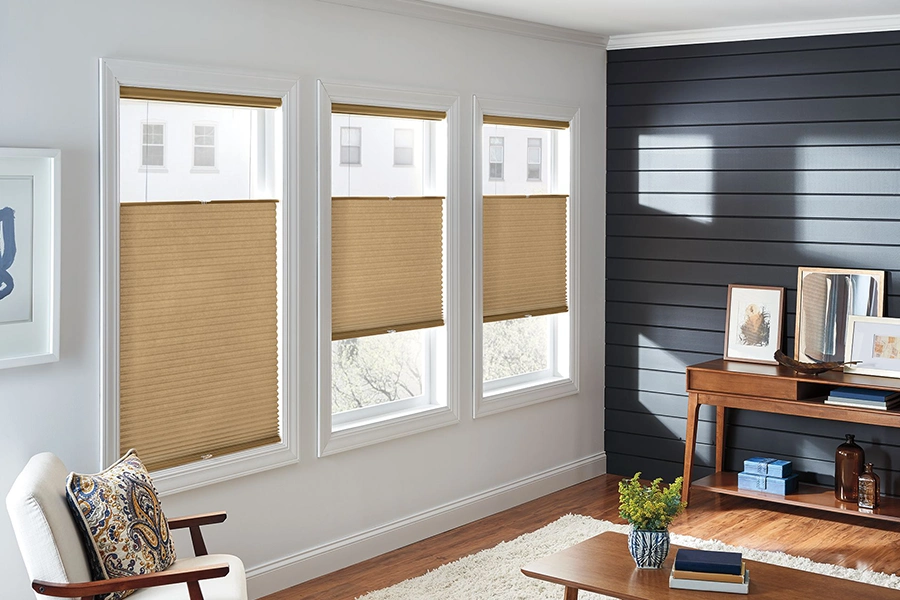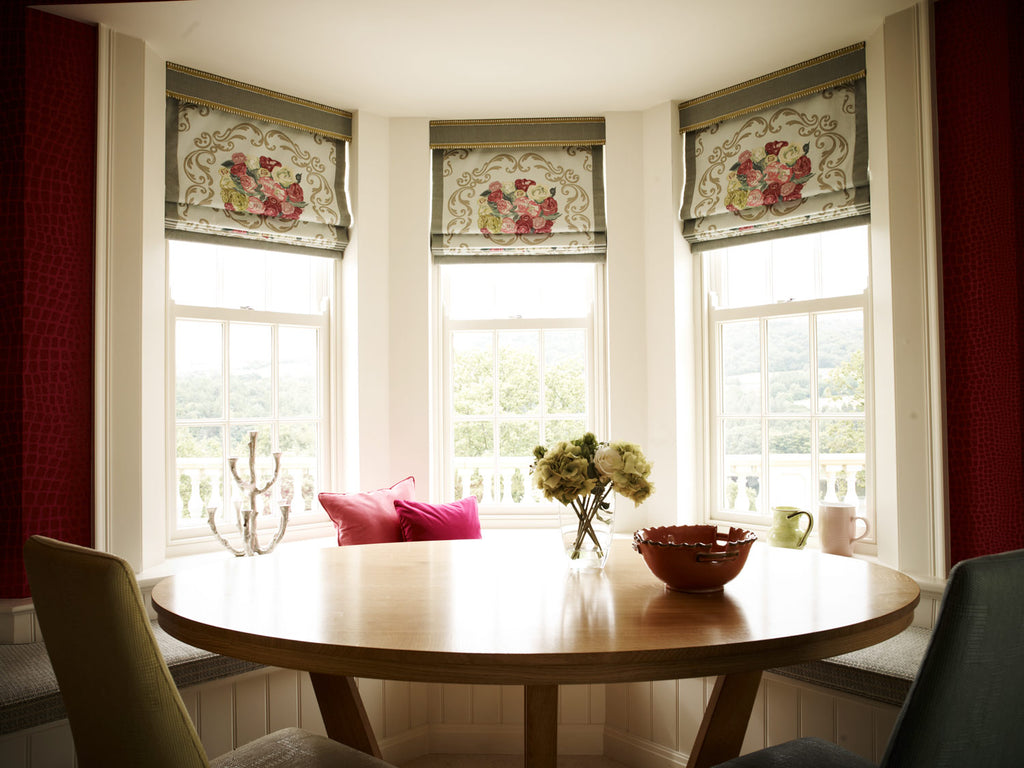The Ultimate Overview to Blinds: Kinds, Benefits, and Picking the Right Fit for You
The globe of window therapies is substantial and differed. Blinds can be found in numerous designs, each offering distinctive benefits for various setups. Comprehending these choices is necessary for making notified decisions. Furthermore, elements like material choice and space performance play a considerable role. As one thinks about the ideal balance between aesthetic appeals and functionality, the nuances of measuring and keeping blinds additionally become crucial elements. What should one focus on when choosing the ideal home window option?
Sorts of Blinds: An Extensive Overview
Blinds offer as both practical and aesthetic elements in indoor style, offering numerous choices to suit varied preferences and demands. Among one of the most prominent types are Venetian blinds, identified by horizontal slats that can be readjusted for light control and personal privacy. Roller blinds, known for their simpleness and flexibility, come in a variety of materials and patterns, making them suitable for modern-day and conventional settings. Vertical blinds, typically utilized for larger windows or gliding doors, enable very easy adjustment and are usually made from fabric or vinyl.
Roman blinds, with their sophisticated folds up, add a touch of refinement to any space, while mobile shades supply insulation and power efficiency. Furthermore, bamboo blinds provide an all-natural, eco-friendly alternative, instilling spaces with heat. Each kind has distinct attributes and styles, making sure homeowners can discover the excellent suitable for their particular decoration and useful requirements.
Benefits of Setting Up Blinds in your house
The installment of blinds in a home offers a number of considerable benefits. They give enhanced privacy control, enabling house owners to manage visibility from the outside. Additionally, blinds contribute to energy effectiveness by aiding to take care of interior temperature levels, reducing the reliance on heating and cooling systems.
Enhanced Privacy Control
When property owners seek to improve their home, setting up blinds provides a significant advantage secretive control. Blinds offer a versatile remedy for regulating visibility from both the exterior and interior of the home. By readjusting the slats or increasing the blinds, individuals can easily manage the quantity of light getting in while concurrently obstructing the view from outside. This flexibility enables house owners to create a comfy ambience without compromising natural light. In addition, numerous styles and products are readily available, making certain that home owners can choose options that seamlessly mix with their decoration while enhancing personal privacy. Eventually, the installation of blinds functions as an efficient means to guard personal space, urging relaxation and assurance within the home atmosphere.
Power Effectiveness Improvement
Mounting blinds not only boosts privacy but additionally significantly contributes to power efficiency in the home. By managing natural light and lowering heat transfer, blinds can aid maintain a consistent interior temperature level. During warmer months, shutting blinds can block out too much sunlight, consequently lowering the dependence on air conditioning. On the other hand, in cooler months, they can provide insulation by trapping warmth, decreasing home heating costs. Furthermore, energy-efficient blinds, such as mobile shades, are created specifically to lessen power loss. By investing in high quality blinds, homeowners can produce an extra comfy living environment while likewise decreasing energy expenses. Inevitably, the installment of blinds acts as a functional remedy for those seeking to enhance both comfort and power performance in their homes.
How to Choose the Right Blinds for every Area
Just how can one determine the most appropriate blinds for every space in a home? The option procedure begins with assessing the space's function and setting. As an example, in living locations, versatile blinds that allow light control while guaranteeing personal privacy are ideal. In rooms, power outage blinds can boost rest top quality by shutting out exterior light.
Bathroom and kitchens call for moisture-resistant alternatives to hold up against moisture, making plastic or artificial wood blinds suitable options. Furthermore, the desired aesthetic plays a vital role; coordinating blinds with the area's style boosts the total atmosphere.
Think about the amount of natural light each area obtains; lighter blinds might be more effective for dark rooms, while darker options can include heat to sunlit areas. Ultimately, recognizing details requirements and preferences for functionality and design will certainly guide home owners in making educated decisions customized to every room's unique needs.
Material Options: Timber, Plastic, Fabric, and Extra

Wood Blinds Conveniences
Timber blinds are a popular selection among home owners seeking a mix of looks and functionality. One substantial advantage of wood blinds is their all-natural appeal, offering a cozy and welcoming look that boosts any type of indoor design. They are readily available in different surfaces and colors, enabling customization to match individual design. Additionally, timber blinds provide exceptional light control and personal privacy, as their slats can be easily readjusted to filter sunlight while keeping privacy. Their resilience is an additional advantage; with appropriate treatment, timber blinds can last for years without losing their charm (Phoenix custom blinds). In addition, they have insulating residential properties, aiding to regulate indoor temperatures and possibly reducing power costs. Generally, timber blinds combine sophistication and usefulness, making them an ideal choice for numerous homes
Vinyl Sturdiness Features
Vinyl blinds wikipedia reference stick out for their phenomenal durability, making them a practical choice for various environments. These blinds are immune to moisture, making them ideal for locations such as washrooms and cooking areas where moisture can be a problem. Unlike wood, vinyl does not warp, fracture, or fade under sunshine, making certain durable efficiency and minimal maintenance. In addition, they are readily available in a range of designs and colors, permitting home owners to tailor their appearance without sacrificing durability. Plastic blinds are likewise easy to tidy; a basic wipe with a wet towel is typically sufficient to maintain them looking fresh. In general, their resilience and reduced upkeep make plastic a preferred option amongst property owners looking for both performance and visual charm.

Material Options Overview
Blinds can be found in a range of fabric alternatives that accommodate different visual and functional demands. Typical materials consist of vinyl, fabric, and timber, each offering one-of-a-kind advantages. Wood blinds offer a classic, cozy visual and excellent insulation but call for maintenance to stop warping. Plastic blinds are resilient and moisture-resistant, making them ideal for high-humidity locations like bathroom and kitchens. Fabric blinds, offered in numerous colors and patterns, supply flexibility and soft qualities, enhancing home decoration while giving varying degrees of light purification. Additionally, choices like fake timber provide the appearance of all-natural timber with added toughness. When picking blinds, it is essential to examine the specific requirements of each area to assure peak efficiency and design.
Measuring and Setting Up Blinds: Tips for Success
Although gauging and setting up blinds may seem simple, mindful attention to information is necessary for attaining a best fit. First, it is important to determine the home window frame precisely, noting both the size and elevation. For inside installs, deduct a percentage from the width to assure a tidy fit, while outdoors places ought to expand past the framework for better light control and aesthetic appeals. Using a steel tape procedure is advised for precision.
When setting up, gather all necessary tools, such as a level, drill, and screws. Adhering to the supplier's instructions is important to assure proper installation. It is advisable to pre-drill openings to stop harming the brackets. In addition, having a second person can make the process smoother, especially when raising larger blinds. Ultimately, after installment, test the blinds to validate they operate efficiently and readjust as needed for optimum capability.
Maintenance and Look After Long-Lasting Blinds
Correct upkeep and treatment can greatly expand the life expectancy of home window coverings. Normal cleaning is necessary; using a soft fabric or a microfiber duster can effectively eliminate dirt without scraping surfaces. For much deeper cleansing, a gentle solution of soap and water is recommended, applied with a soft sponge, assuring that no moisture permeates right into the devices.
For textile blinds, spot cleaning is recommended, while wood blinds must be treated with a wood-safe cleaner to maintain their finish. Stay clear of subjecting callous too much wetness, heat, or direct sunlight, which can bring about warping or fading.
Additionally, routine examination of cables and systems can prevent damage. It's a good idea to follow maker my response guidelines for specific materials, as different blinds might have unique care needs. By adopting these straightforward maintenance techniques, home owners can ensure their blinds remain useful and cosmetically pleasing for several years to come.
Often Asked Concerns
Can Blinds Help In Reducing Energy Prices in My Home?
Blinds can effectively reduce power prices in a home by offering insulation, obstructing warm during summer, and preserving heat in winter months. Their capability to regulate light and air flow enhances energy efficiency throughout the year.
Exist Child-Safe Options for Blinds?
Yes, there are child-safe alternatives for blinds. These consist of cordless styles, retracting cords, and security devices that get rid of dangling cords, guaranteeing a secure atmosphere for kids while maintaining performance and visual allure in homes.

Just How Do Blinds Contrast to Shades or curtains?
Blinds commonly offer a lot more specific light control and area effectiveness than shades or drapes. Phoenix drapes. They are frequently easier to preserve and clean up, while drapes supply a softer aesthetic, and tones can provide differing insulation advantages
Can I Customize the Design And Color of My Blinds?
Yes, blinds can be tailored in both design and color. Different manufacturers supply a broad array of choices, permitting clients to pick materials, patterns, and tones that fit their individual aesthetic and home style.
What Is the Typical Life-span of Different Kinds of Blinds?
The average life expectancy of blinds differs: wood blinds last 5-10 years, artificial timber 7-10 years, aluminum 5-10 years, and material tones around 5 years, depending upon exposure, use, and upkeep to sunshine.
Washrooms and kitchens need moisture-resistant choices to hold up against humidity, making vinyl or artificial timber blinds suitable choices. Wood blinds use all-natural beauty and warmth, while vinyl supplies resilience and simplicity of upkeep. One substantial benefit of wood blinds is their natural charm, using a cozy and inviting look that improves any type of indoor decoration. In addition, timber blinds provide excellent light control and privacy, as their slats can be easily changed to filter sunlight while preserving seclusion. For material blinds, area cleaning is recommended, while wooden blinds ought to be treated with a wood-safe cleaner to preserve their finish.